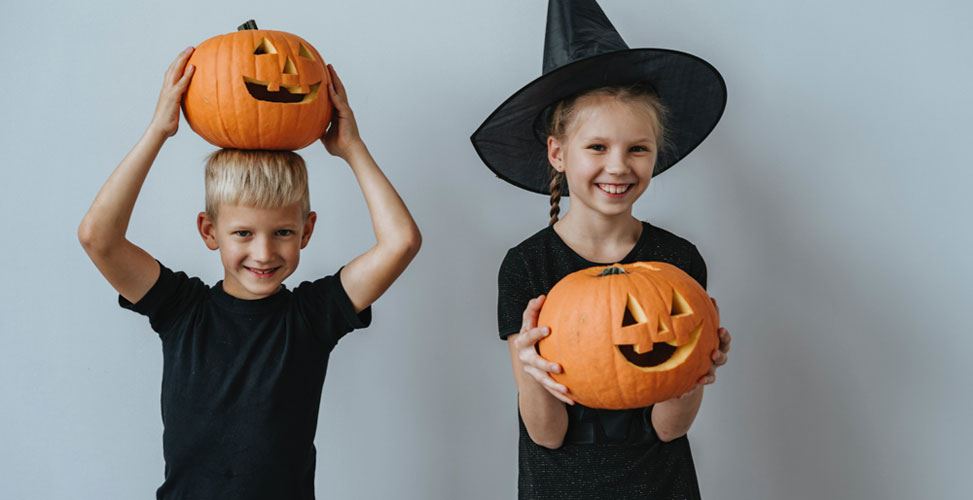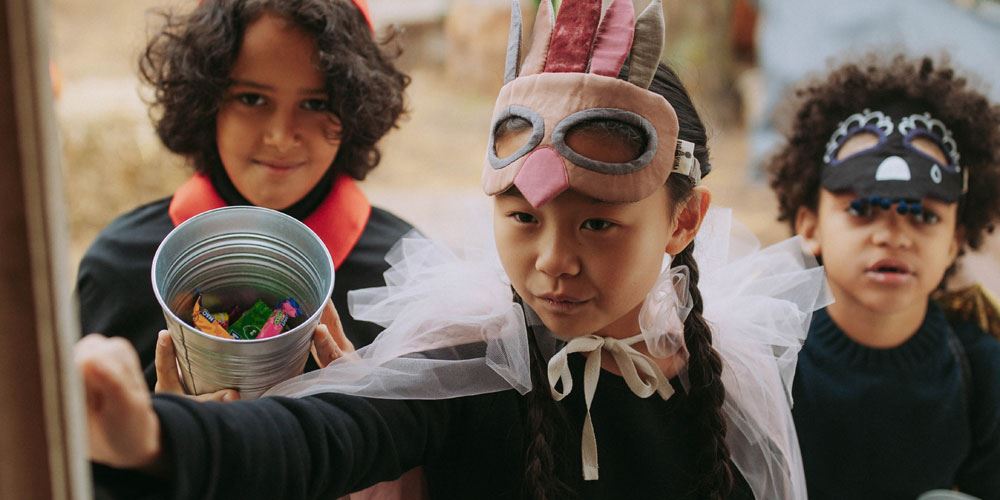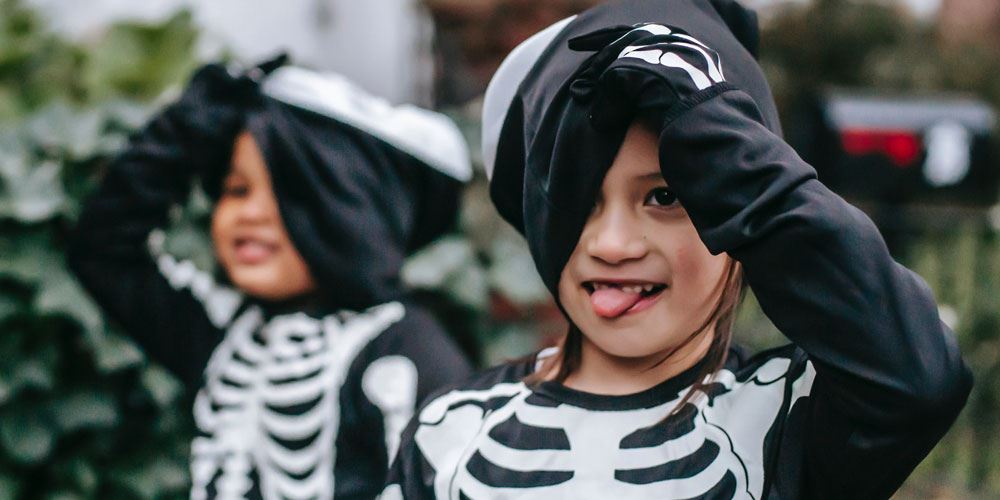How To Host an Inclusive halloween
Halloween is one of the most universally celebrated holidays in the United States today. Each year, children pour over costume ideas, dream about the treats they'll collect and enjoy fun, fall-themed activities at school. But Halloween isn't easy for every child.
This how-to guide guide offers tips and additional information to help families and the surrounding communities create more inclusive Halloween celebrations.
Be Aware of Sensory ConcernsSensory issues affect, on average, 1 in 6 children in the United States today. Make your Halloween more sensory inclusive by improving awareness and limiting sensory triggers. Remove Obstacles for Other Disabilities15 percent of all children attending public school receive special education services for a disability. Remove obstacles to ensure that children have equal access to Halloween activities. | Include Kids with Food Allergy/Feeding Challenges1 in 13 children are diagnosed with food allergies and many more experience other issues with food. Consider non-food alternatives to traditional Halloween candy. | Reduce Triggers that Can Cause Anxiety Research shows that anxiety disorders affect as many as 1 in 8 children in the United States. Reduce triggers at your Halloween celebration to focus on fun over fear. | Foster a Gender-Affirming EnvironmentAccording to research, between 2 and 12 percent of children experience gender dysphoria in adolescence. Affirming gender-creative costumes can help children to maintain self esteem. |
Alternative Halloween Activities for Families
Looking for a sensory-friendly alternative to trick-or-treat? Here are a few ideas:
Alternative Costume Ideas for FamiliesNot every child can tolerate a Halloween costume. We loved this article with tips for creating a sensory-friendly Halloween costume and an entire Pinterest board with costume ideas. |
Ideas for Families to Accommodate Candy TreatsDespite growing awareness for providing non-food treats, many children will still receive candy they can't eat. Here are some fun ideas that will help children give up candy without feeling like they're missing out:
|
Tips to Make your Celebration Inclusive for Children with AnxietyResearch shows that anxiety disorders, resulting in frequent and persistent symptoms that impact all areas of life, affect as many as 1 in 8 children in the United States. While many of us look forward to the spooky fun traditionally involved in celebrating Halloween, children with anxiety disorders may be so overcome by fears that they are unable to participate. To help include all children in Halloween activities, focus on an evening that is fun - not fearful:
| Ideas for Families to Help Prepare Your Child for HalloweenOne of the best ways families can help fight Halloween anxiety is by preparing in advance:
|
Tips to Foster a Gender-Affirming EnvironmentHalloween is a time when children can imagine themselves to be anyone - including someone with a different gender than their own. This is called gender expression. According to experts, gender expression through a Halloween costume that carries traits of the opposite sex does not necessarily mean that a child has a different gender identity or that he or she has a different sexual preference. Because a percentage of children do experience gender dysphoria (a disorder in which an adolescent identifies with a gender other than the sex assigned at birth) in adolescence, it can be helpful to affirm gender-creative costumes. Community members can do this by acknowledging positive aspects of the costume. For example:
| This video co-sponsored by Colors+ Youth Center Ideas for Families of Children who Choose Gender-Creative CostumesFamilies can support their children's costume choices by:
|
Ideas for Families of Children with Other Disabilities
|
Additional Articles, Tips and Resources
- 31 Halloween Signs: YouTube Video
- Baylor College of Medicine: Let Kids Dress to Express themselves this Halloween
- Food Allergy Research & Education: Teal Pumpkin Project
- Partners for Youth with Disabilities: Halloween Safety & Disability Inclusion Tips
- Positively Autism: Free downloads, including social stories, vocabulary pack, and trick-or-treat cards for nonverbal children
- Snack Safely: Update to Safe Snack Guide and Allergence: Halloween 2019 Edition
- Understood: How My Family Created a Sensory-Friendly Halloween


 1 in 13 children are diagnosed with food allergies and many more experience issues with food, including diabetes, swallowing issues and oral motor challenges. Traditional candy treats can cause some unintended Halloween struggles for these children, but there's an easy fix: consider offering non-food treats as an alternative to traditional Halloween candy. Whether you choose to participate in
1 in 13 children are diagnosed with food allergies and many more experience issues with food, including diabetes, swallowing issues and oral motor challenges. Traditional candy treats can cause some unintended Halloween struggles for these children, but there's an easy fix: consider offering non-food treats as an alternative to traditional Halloween candy. Whether you choose to participate in 

